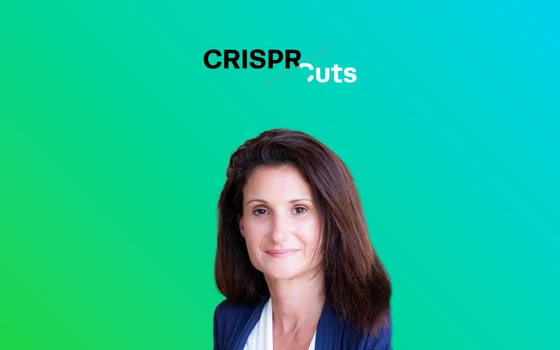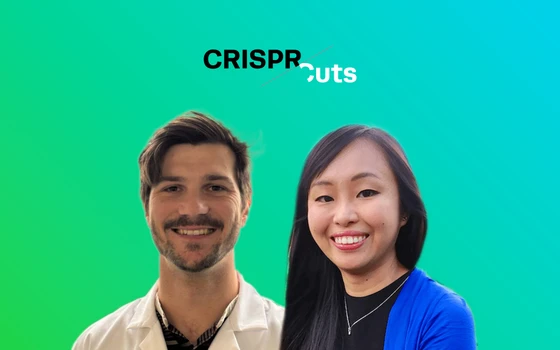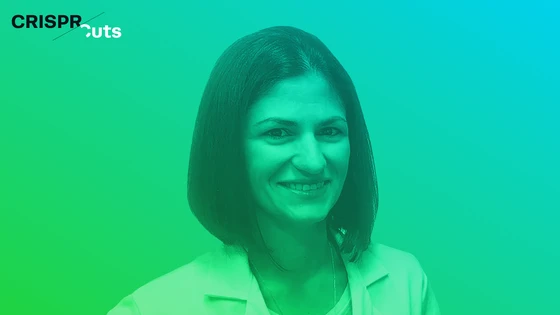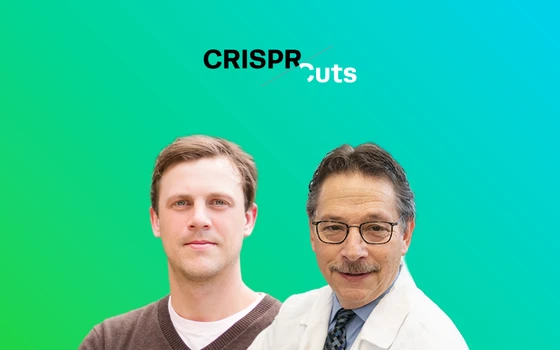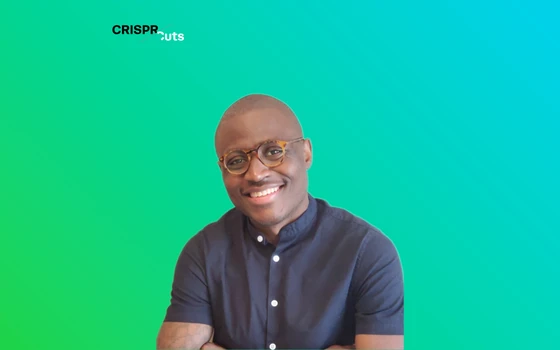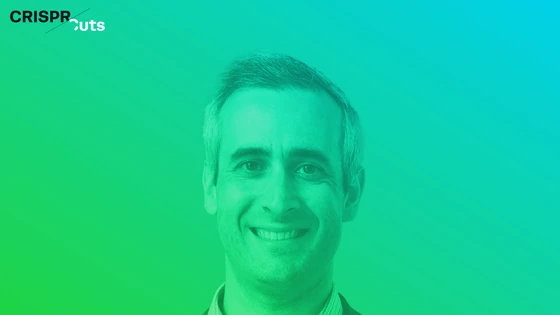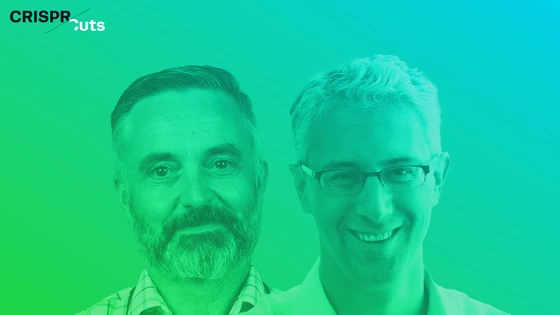Professor Stephanie Cherqui, UCSD, is a trailblazer in the field of CRISPR therapies for rare diseases. Originally from France, Cherqui was always passionate about genetics and completed her first internship with Généthon at the age of 16. After completing her Masters's degree and Ph.D. research at the University of Paris, she moved to the US for a postdoctoral fellowship at the Scripps Institute.
Currently a Professor at the University of California San Diego’s Department of Pediatrics, Stephanie is also a committee member of the Organization for Metabolic and Genetic Disease, and has developed CRISPR-edited cell therapies for two rare genetic diseases, cystinosis, and Friedreich’s ataxia. In this interview, Stephanie spoke with Synthego’s Head of Science, Kevin Holden, and our Associate Director of Content Marketing, Meenakshi Prabhune (Minu), about her wealth of knowledge in rare diseases, CRISPR therapies, clinical development, and more.
Curing Two Fatal Diseases with CRISPR Therapy
Kevin: Can you tell us a little bit about both of the diseases that you work on, how they affect patients, and what some of the clinical outcomes are?Stephanie: Cystinosis is a multisystemic disease, and patients have a very poor quality of life. It starts in infancy with a kidney defect, and the patients end up with chronic kidney disease and need a transplant. They also have eye dysfunction that can lead to blindness, myopathy, endocrine dysfunction, bone disease, and many clinical complications.
Friedreich's ataxia is a neurodegenerative disorder with damage of the nervous system that leads to loss of coordination, muscle function, and, eventually, heart complications. Patients lose their ability to walk and end up in a wheelchair, and heart dysfunction is the primary cause of death. So, both diseases are fatal at an early age. The complicating factor is that they impact so many tissues throughout the body – it’s difficult for gene therapy to reach all these tissues.
Stephanie: Cystinosis is a multisystemic disease, and patients have a very poor quality of life. It starts in infancy with a kidney defect, and the patients end up with chronic kidney disease and need a transplant. They also have eye dysfunction that can lead to blindness, myopathy, endocrine dysfunction, bone disease, and many clinical complications.
Friedreich's ataxia is a neurodegenerative disorder with damage of the nervous system that leads to loss of coordination, muscle function, and, eventually, heart complications. Patients lose their ability to walk and end up in a wheelchair, and heart dysfunction is the primary cause of death. So, both diseases are fatal at an early age. The complicating factor is that they impact so many tissues throughout the body – it’s difficult for gene therapy to reach all these tissues.
Kevin: How can you utilize gene editing technology like CRISPR to cure these diseases?
Stephanie: For ex vivo gene therapy, we use hematopoietic stem cells, and we genetically modify them ex vivo. Then we perform myeloablation using chemotherapy in patients, which removes their own bone marrow stem cells, so that we can do a bone marrow transplant. That means the edited hematopoietic stem cells reconstitute the bone marrow long-term, they multiply there, and they integrate and graft into the tissues that are damaged. The beauty of ex vivo gene therapy is that it's a one-time transplant, and the cells act like an intelligent vehicle that will bring the functional protein where it's needed, so it's a very powerful technology.
In the case of cystinosis, we added the gene to the cells using a lentivirus vector. Because overexpression of the gene is not toxic, it was appropriate to use a lentivirus vector that is very efficient to genetically modify the cells.
In the case of Friedreich's ataxia, of course, I thought we could do the same thing again, so I thought it would be easy, but we were facing another challenge, which was that the overexpression of the functional gene is toxic. So, obviously, we couldn't use a lentivirus vector to add the gene. But the advantage of this disease is that all the patients with Friedreich's ataxia carry the same mutation, it's an expansion mutation in the intron 1 of the frataxin gene. This expansion can be a different size, but all the patients carry an expansion.
So for Friedreich’s ataxia it would be appropriate to use CRISPR-Cas9 to cut this expansion mutation out of the genome because it's in all the patients. But most importantly, the mutation is in the intron. That means we can cut out the expansion, and if there's an unintended mutation when it's going back, it's not a big deal because we are dealing with an intron. This is what we developed; we use CRISPR-Cas9 and two guide RNAs to be able to remove this expansion mutation in the intron 1 of the frataxin gene.
Stephanie: For ex vivo gene therapy, we use hematopoietic stem cells, and we genetically modify them ex vivo. Then we perform myeloablation using chemotherapy in patients, which removes their own bone marrow stem cells, so that we can do a bone marrow transplant. That means the edited hematopoietic stem cells reconstitute the bone marrow long-term, they multiply there, and they integrate and graft into the tissues that are damaged. The beauty of ex vivo gene therapy is that it's a one-time transplant, and the cells act like an intelligent vehicle that will bring the functional protein where it's needed, so it's a very powerful technology.
In the case of cystinosis, we added the gene to the cells using a lentivirus vector. Because overexpression of the gene is not toxic, it was appropriate to use a lentivirus vector that is very efficient to genetically modify the cells.
In the case of Friedreich's ataxia, of course, I thought we could do the same thing again, so I thought it would be easy, but we were facing another challenge, which was that the overexpression of the functional gene is toxic. So, obviously, we couldn't use a lentivirus vector to add the gene. But the advantage of this disease is that all the patients with Friedreich's ataxia carry the same mutation, it's an expansion mutation in the intron 1 of the frataxin gene. This expansion can be a different size, but all the patients carry an expansion.
So for Friedreich’s ataxia it would be appropriate to use CRISPR-Cas9 to cut this expansion mutation out of the genome because it's in all the patients. But most importantly, the mutation is in the intron. That means we can cut out the expansion, and if there's an unintended mutation when it's going back, it's not a big deal because we are dealing with an intron. This is what we developed; we use CRISPR-Cas9 and two guide RNAs to be able to remove this expansion mutation in the intron 1 of the frataxin gene.
Overcoming Challenges in Clinical Development
Minu: Can you talk about the challenges in taking a CRISPR-based therapy into clinical trials and how you have overcome those obstacles?Stephanie: When I decided to take the cystinosis therapy to the clinic and I started to do all the steps from the preclinical studies to the clinical, I didn't know how challenging it was. It was good to be naïve, because it was like climbing a mountain - when you think that you are at the top, there’s another mountain in front of you, and then another one. It's like it never ends, and it's very complicated.
Especially as an academic researcher, it is even more challenging because we have to do everything; we have to be a toxicology-pharmacology expert and a manufacturing expert. Because I'm not an MD, I had to work a lot with my colleagues at UCSD, who are physicians.
When you have to provide the IND application, there are three major parts: the toxicology-pharmacology studies, the manufacturing development, and the clinical design. I realized that you need to be involved in every part of this journey. I went up to the pre-IND stage completely by myself. And because I didn't know all the rules, in a way, it was good.
Later on, for the cystinosis project, I will partner with a company that will sublicense the project after I'm done with the phase 1 and 2 clinical trials. It’s really good to have their help for the IND application because you need experts and consultants along the way. For manufacturing, for all the reagents, you need to have people who will help you with all the requirements for the IND application.
Stephanie: When I decided to take the cystinosis therapy to the clinic and I started to do all the steps from the preclinical studies to the clinical, I didn't know how challenging it was. It was good to be naïve, because it was like climbing a mountain - when you think that you are at the top, there’s another mountain in front of you, and then another one. It's like it never ends, and it's very complicated.
Especially as an academic researcher, it is even more challenging because we have to do everything; we have to be a toxicology-pharmacology expert and a manufacturing expert. Because I'm not an MD, I had to work a lot with my colleagues at UCSD, who are physicians.
When you have to provide the IND application, there are three major parts: the toxicology-pharmacology studies, the manufacturing development, and the clinical design. I realized that you need to be involved in every part of this journey. I went up to the pre-IND stage completely by myself. And because I didn't know all the rules, in a way, it was good.
Later on, for the cystinosis project, I will partner with a company that will sublicense the project after I'm done with the phase 1 and 2 clinical trials. It’s really good to have their help for the IND application because you need experts and consultants along the way. For manufacturing, for all the reagents, you need to have people who will help you with all the requirements for the IND application.
Kevin: In terms of the regulatory hurdles that you face during clinical development, how beneficial is it to have companies, institutes, or individuals providing assistance?
Stephanie: It's critical. It's very important when you work with a company who are really involved in this process and understands it, and they know what is required. For each of the reagents you will use in the clinic, you need to have a Certificate of Analysis (CoA), you need to prove that it is safe, and you need to prove that this is good manufacturing practice (GMP)-grade. You need to check so many boxes. So you need to work with experts in the field and have people who are there to answer your questions and are able to help you.
Stephanie: It's critical. It's very important when you work with a company who are really involved in this process and understands it, and they know what is required. For each of the reagents you will use in the clinic, you need to have a Certificate of Analysis (CoA), you need to prove that it is safe, and you need to prove that this is good manufacturing practice (GMP)-grade. You need to check so many boxes. So you need to work with experts in the field and have people who are there to answer your questions and are able to help you.
Clinical Trials, FDA Interactions, and the Future of Cell and Gene Therapy
Minu: We’re curious about your upcoming clinical trials, and how they will be executed. Can you please tell us a little bit about that?Stephanie: For Friedreich's ataxia, we are at the turning point, going from the preclinical studies to the toxicology-pharmacology studies and then manufacturing development. So we are starting that, but we’re still not at the clinical stage because there are maybe two or three years to go before we can file an IND. But of course, we are starting to think about clinical trials. At this stage, I still don't know what age population we would be authorized [to test on].
I think everybody is scared of the FDA, but for me, I have always had a really good relationship with them, and I was happily surprised to see how helpful they are. Starting very early on, we had a conversation with the FDA about the cystinosis project, a pre-pre-IND meeting. Now, we call that an INTERACT meeting. They guide you and advise you on every step: the pharmacology, the manufacturing, what they want to see, and also the clinical stage.
What you do for one disease will not be true for the other, so it really depends on the balance of risks versus benefits. At this stage, I haven’t had my INTERACT meeting with the FDA for the Friedreich’s ataxia project, so I cannot answer the clinical aspects of this project yet.
For this kind of work, it's also important to say that you need a lot of funding. It's very expensive, and that's why, for the longest time, this was mostly done by pharmaceutical companies [not academics]. In California, we are lucky to have the California Institute for Regenerative Medicine (CIRM), who provide really substantial grants. So as an academic, you can do this kind of work and pay a good consultant who can help you and get your reagents right away.
Stephanie: For Friedreich's ataxia, we are at the turning point, going from the preclinical studies to the toxicology-pharmacology studies and then manufacturing development. So we are starting that, but we’re still not at the clinical stage because there are maybe two or three years to go before we can file an IND. But of course, we are starting to think about clinical trials. At this stage, I still don't know what age population we would be authorized [to test on].
I think everybody is scared of the FDA, but for me, I have always had a really good relationship with them, and I was happily surprised to see how helpful they are. Starting very early on, we had a conversation with the FDA about the cystinosis project, a pre-pre-IND meeting. Now, we call that an INTERACT meeting. They guide you and advise you on every step: the pharmacology, the manufacturing, what they want to see, and also the clinical stage.
What you do for one disease will not be true for the other, so it really depends on the balance of risks versus benefits. At this stage, I haven’t had my INTERACT meeting with the FDA for the Friedreich’s ataxia project, so I cannot answer the clinical aspects of this project yet.
For this kind of work, it's also important to say that you need a lot of funding. It's very expensive, and that's why, for the longest time, this was mostly done by pharmaceutical companies [not academics]. In California, we are lucky to have the California Institute for Regenerative Medicine (CIRM), who provide really substantial grants. So as an academic, you can do this kind of work and pay a good consultant who can help you and get your reagents right away.
Minu: We are at an interesting point where the development of cell and gene therapies is scaling up, but many researchers are concerned that the FDA won’t be able to keep up with the pace of development. Where do you see the cell and gene therapy field in five years?Stephanie: That’s a really good point. It's true that, as much as the FDA wants to help, there is a backlog [of applications] now that the field of cell and gene therapy is really exploding. There is so much going on in this field, but the FDA recognizes that. At a conference last week, an FDA officer gave us the good news that they’ve had a budget increase, and they can hire more people to review cell and gene therapy products faster.
I think it took some time to realize how impactful the field is, but now stem cells and gene therapy are really considered part of the future of medicine. There are more and more products that are FDA-approved now that are part of the standard of care. So I think the FDA recognizes that, and the government is giving more funding for this kind of product, so we are lucky. I think it will be better and better.
We hope you found this interview interesting. Curious to learn more about our clinical offerings and new GMP sgRNA facility? Contact us to learn more or consult about your project.
Stephanie: That’s a really good point. It's true that, as much as the FDA wants to help, there is a backlog [of applications] now that the field of cell and gene therapy is really exploding. There is so much going on in this field, but the FDA recognizes that. At a conference last week, an FDA officer gave us the good news that they’ve had a budget increase, and they can hire more people to review cell and gene therapy products faster.
I think it took some time to realize how impactful the field is, but now stem cells and gene therapy are really considered part of the future of medicine. There are more and more products that are FDA-approved now that are part of the standard of care. So I think the FDA recognizes that, and the government is giving more funding for this kind of product, so we are lucky. I think it will be better and better.
We hope you found this interview interesting. Curious to learn more about our clinical offerings and new GMP sgRNA facility? Contact us to learn more or consult about your project.
